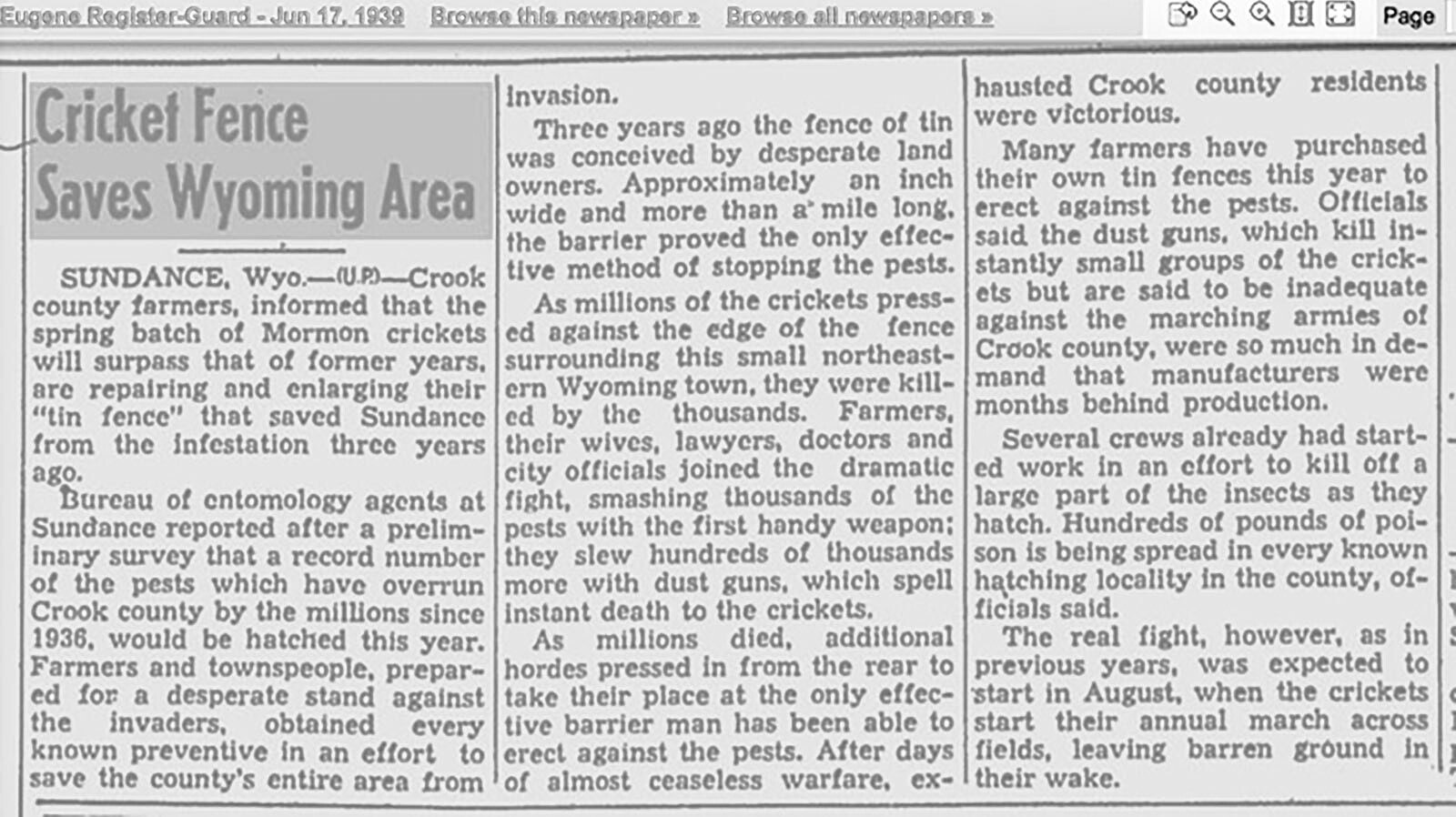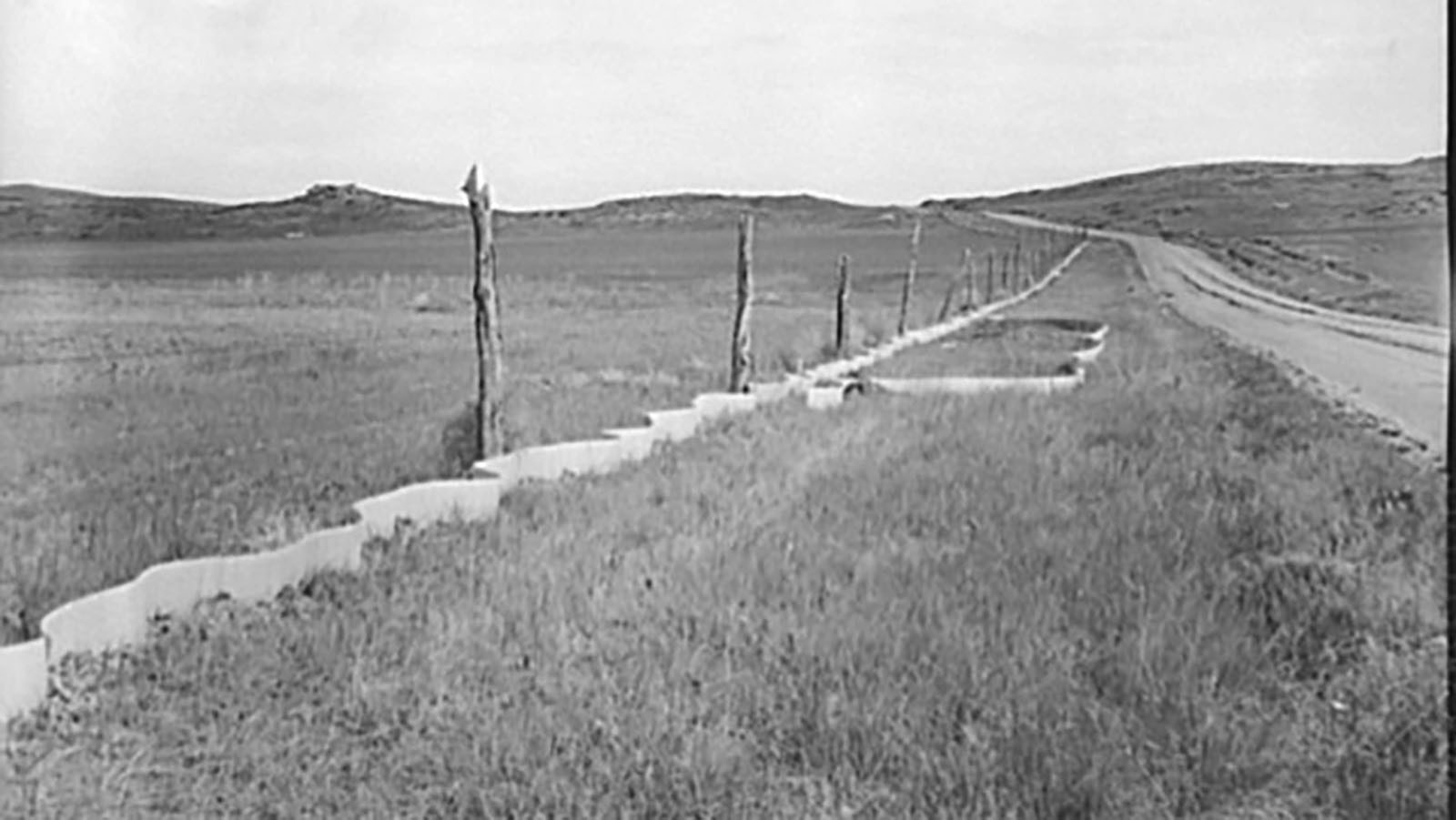A 1939 article in the Eugene (Oregon) Register-Guard newspaper sent in by a Cowboy State Daily Reader offers a glimpse into another life-and-death struggle between Mormon crickets and northeastern Wyoming towns like Sundance during the 1930s.
Peggy Sanders with the CCC Museum at Hill City in South Dakota, saw a Cowboy State Daily story Wednesday about an outbreak of millions of Mormon crickets on the tiny town of Edgerton in Natrona County.
The 1939 article warns readers that Bureau of Entomology agents in Sundance were predicting the spring batch of Mormon crickets would be worse in Crook County than previous years based on egg counts.
That was dire news for Crook County at the time, where farmers were already exhausted from battling millions of these hungry creatures year after year going back to 1936, according to the article.
More than 80 years later, the current infestation in and around Edgerton could be the start of a new surge. The infestation wave could last years, if decades of history are any guide.
Mormon Crickets Around During Great Depression
Historical articles, meanwhile, suggest that the Mormon cricket plague in the Sundance area actually goes back to 1931, before peaking in 1938.
“Farmers and townspeople, prepared for a desperate stand against the invaders, obtained every known preventative in an effort to save the county’s entire area from invasion,” the 1939 article in the Eugene Register states.
What the farmers came up with is pretty ingenious, even if low-tech, and it took perfect advantage of the Mormon crickets’ biggest weaknesses.
The insects, which are actually a katydid and not a cricket at all, have difficulty climbing any slick surface. Their instincts also force them to travel in one particular direction en masse, making it difficult for them to change direction, and their wings are useless for flight.
On top of all this, they’re also cannibals. The dead bodies of their fellows attract the hungry living — in numbers.
So, what the farmers did to get the upper hand on the crickets then was to sink a fence of slick and shiny tin around the cropland they wanted to protect. That trapped mormon crickets by the hundreds of thousands, all in one place, and their natural instinct kept them marching more or less in place, perfectly situated for mass smashing.
The fence was about an inch wide and more than a mile long. It proved a most effective way of gathering the insects all in one place for killing from all the able-bodied townspeople, farmers and their wives.

For The Good Of The Order
Lawyers, doctors, city officials — basically no one was too good to join the front line that had been defined by that tin fence.
Everyone worked together in what the article describes as a “dramatic fight,” smashing the pests by the thousands with whatever weapon was handy.
Some had what are called dust guns, which could kill small groups of the crickets instantly, but flat weapons were a little more effective against such large numbers.
“As the millions died, additional hordes pressed in from the rear, taking their place at the only effective barrier man has been able to erect against the pests,” the article states.
This hot and dusty fight went on for days, exhausting Crook County residents, but it was worth it. They were ultimately successful in saving their sweet corn and delectable wheat, barley and edible dry beans from getting munched by ravenous Mormon crickets.
“Farmers have purchased their own tin fences this year to erect against the pests,” the article states. “Officials said the dust guns which kill instantly small groups of crickets, but are said to be inadequate against the marching armies of Crook County, were so much in demand that manufacturers were months behind production.”
The article noted that crews were already at work in June 1939 killing insects as they hatched, trying to stave off the march of hundreds of thousands. Poison, too, was being spread in every known hatching locality.
“The real fight, however, as in previous years, was expected to start in August,” the article concludes, “when the crickets start their annual march across the fields, leaving barren ground in their wake.”
Contact Renée Jean at Renee@CowboyStateDaily.com





